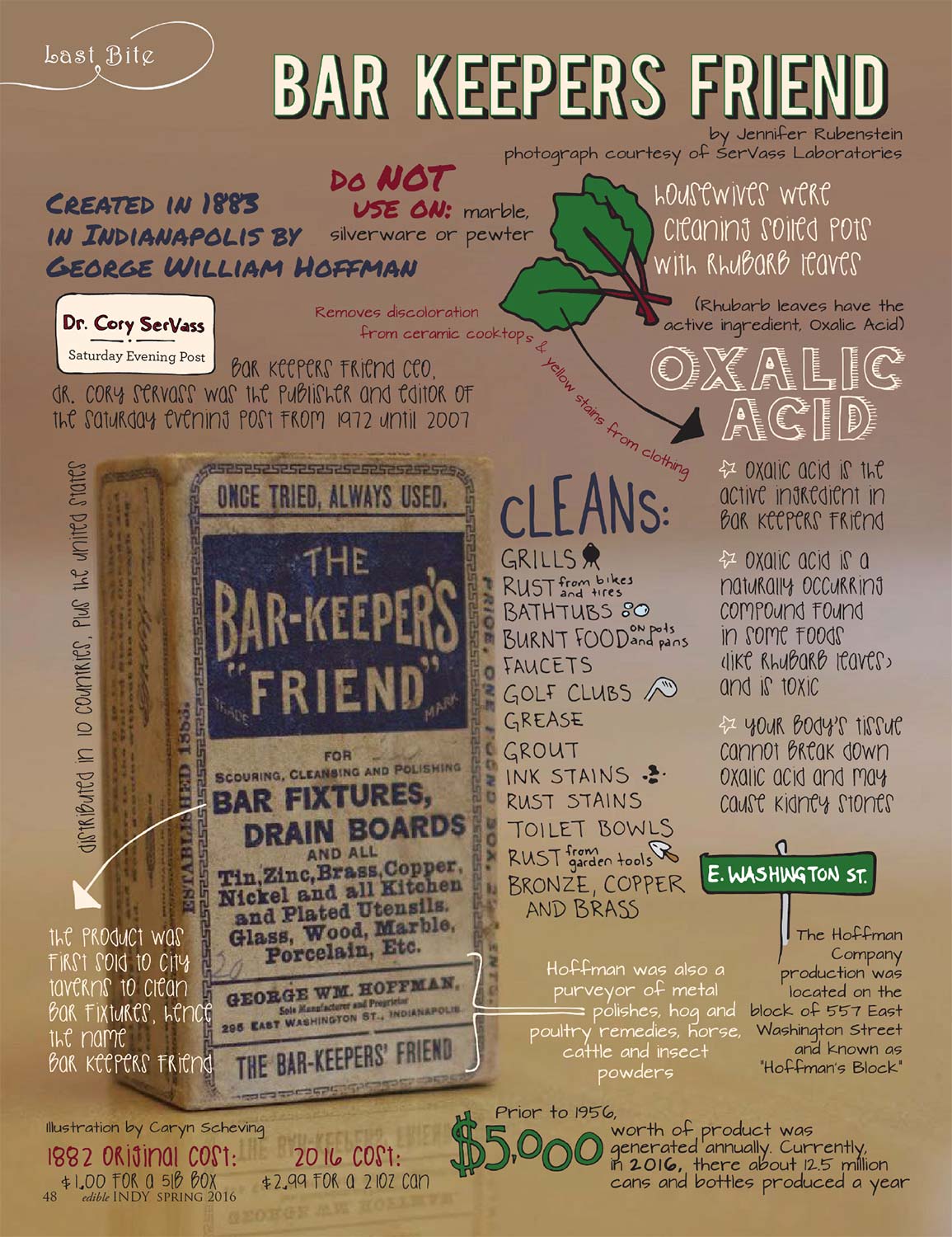BAR KEEPERS FRIEND
CREATED IN 1883 in Indianapolis by George William Hoffman
DISTRIBUTED IN 10 COUNTRIES - Plus the United States
DR. CORY SERVASS - SATURDAY EVENING POST
Bar Keepers Friend CEO, Dr. Corey Servass was the publisher and editor of the Saturday Evening Post from 1972 until 2007
DO NOT USE ON: marble, silverware or pewter
Removes discoloration from ceramic cooktops & yellow stains from clothing
OXALIC ACID:
Housewives were cleaning soild pots with rhubarb leaves (Rhubarb leaves have the active ingredient, Oxalic Acid)
- Oxalic Acid is the key ingredient in Bar Keepers Friend
- Oxalic Acid is a naturally occurring compound found in some foods like rhubarb leaves, and is toxic
- Your body's tissue cannot break down oxalic acid and may cause kidney stones
CLEANS:
- Grills
- Rust from bikes and tires
- Bathtubs
- Burnt food on pots and pans
- Faucets
- Golf Clubs
- Grease
- Grout
- Ink Stains
- Rust Stains
- Toilet Bowls
- Rust from Garden Tools
- Bronze, Copper and Brass
The product was first sold to city taverns to clean bar fixtures, hence the name BAR KEEPERS FRIEND
GEORGE WM. HOFFMAN, Sole Manufacturer and Proprieter
Hoffman was also a purveyor of metal polishes, hog and poultry remedies, horse, cattle and insect powders
E. WASHINGTON ST.: The Hoffman Company production was located on the block of 557 East Washington Street and known as "Hoffman's Block"
1882 ORIGINAL COST: $1.00 for a 5 lb. box
2016 COST: $2.99 for a 10 oz. can
Prior to 1956, $5,000 worth of product was generated annually. Currently, in 2016, there about 12.5 million cans and bottles produced a year
 Photograph courtesy of SerVass Laboratories
Photograph courtesy of SerVass Laboratories
Illustration by Caryn Scheving




